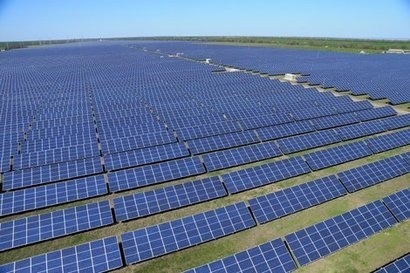
According to Wood Mackenzie’s Research Director for Americas Power & Renewables Research
Prajit Ghosh, the role of solar in the North American power market has snowballed to become a key renewable competitor to wind power, a regional threat to non-renewable technologies and a potential disruptor of utility business models and the power industry at large. This has been achieved in part by the widespread collapse of solar module prices over the past six years. Mr Ghosh compares its impact to that of the now declining shale gas industry.
“Just as shale extraction technologies reconfigured oil and gas markets, no other technology is closer to transforming power markets in a similar fashion than distributed and utility-scale solar” said Ghosh. “With module costs at historical lows, efficiency improvement has become the next frontier as the best way to reduce balance of system and labour costs as less panels produce similar output levels. Thus, while more efficient solar technology may command a higher module price, the capacity gains per square meter usually make high-efficiency modules more economic on a $/W basis. That said, savings will also be driven by changes outside of manufacturing. Non-module costs will increasingly depend on heightened downstream competition, market structuring and regulatory redesign.”
Since the late 2000s and early 2010s, module costs have fallen from nearly 40 percent of the installed price to just fewer than 20 percent. This in turn has driven rapid declines in overall solar costs meaning that the cost of building solar plants has fallen. Wood Mackenzie expects this trend to continue, particularly given that efficiency improvements are not the only technological advances that could push things forward. New PV materials such as perovskite, creative applications of photovoltaics in building material, windows, and even paint are some of the technologies that could conceptually have an impact.
“While these technologies are nowhere near commercial availability at the moment, photovoltaics have a promising potential as an immensely versatile source of power generation” added Chad Singleton, Senior Analyst for Americas Power & Renewables Research at Wood Mackenzie.
Solar energy has extended its reach across multiple markets and its levelised costs are already at grid parity in many US states and will continue to fall. By 2020, solar energy in 19 states is expected to reach grid parity with twice as many states reaching grid parity by 2030.
Wood Mackenzie's forecast for the US assumes 26 gigawatts (GW) of distributed solar and about 45 GW of large scale solar by 2035, which totals over 71 GW of solar.
According to Ghosh, although the potential for solar energy penetration could be much larger in North America, reliability concerns, legal statutes, and other factors could limit growth prospects. There is little material linkage between lower oil prices and solar energy penetration. However, the indirect impact of lower oil prices on drilling activity and consequent gas prices could potentially hurt solar economics.
Wholesale markets are not currently designed to accommodate large amounts of solar energy. Should solar energy penetration rapidly increase, other forms of capacity will still be necessary to meet needs during low-solar hours such as night time and periods of heavy cloud cover. However, maintaining backup capacity on the grid will become increasingly difficult as solar energy lowers power prices and worsens the economics of other technologies. This means that current energy and capacity market design and compensation mechanisms will need to evolve to maintain reliability. Rate design on the retail side will also need to change. Solar rooftops reduce the need for grid-connected power but do not eliminate it. Thus, issues around assigning fixed cost charges to maintain the grid have and will continue to arise.
For additional information:

